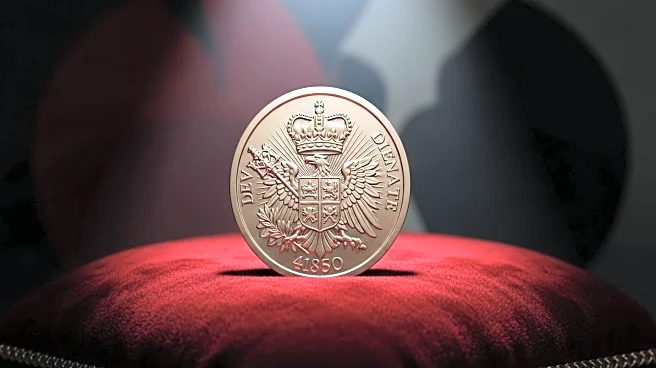What is the story about?
What's Happening?
President Trump is considering placing his image on a commemorative $1 coin to mark the United States' 250th anniversary. This proposal, confirmed by U.S. Treasurer Brandon Beach, would feature Trump's image on both sides of the coin. Historically, U.S. currency has avoided depicting living individuals, especially sitting presidents, but there have been exceptions. The Circulating Collectible Coin Redesign Act of 2020, signed by Trump, allows for redesigns of coins for the 250th anniversary series, but it restricts living persons' portraits on the reverse side only. This legal nuance could permit Trump's image on the coin's front. The proposal has sparked discussions about its legality and adherence to American traditions of not featuring living leaders on currency.
Why It's Important?
The proposal to feature President Trump on a U.S. coin challenges longstanding traditions and raises questions about the legal framework governing U.S. currency design. If approved, it could set a precedent for future commemorative coins, potentially altering the norms of American numismatics. The move could also influence public perception of presidential legacy and the symbolic representation of leadership in the U.S. currency system. While the legal barriers appear surmountable, the proposal may face scrutiny from historians and legal experts who value the tradition of not depicting living figures on currency.
What's Next?
The decision to proceed with the coin design rests with administration officials, potentially allowing President Trump to maintain control over the process. However, the proposal could face legal challenges if opponents argue it violates traditional norms or specific legislative restrictions. The outcome may depend on whether any party can demonstrate direct harm from the coin's production, a requirement for legal standing in court. The debate may also prompt Congress to revisit and possibly revise the legal guidelines for commemorative coin designs.
Beyond the Headlines
The proposal highlights a broader cultural and historical debate about the role of living figures in national symbolism. It raises questions about the balance between honoring contemporary figures and preserving historical traditions. The decision could influence future commemorative practices and the cultural significance of currency as a medium for national identity and values.
AI Generated Content
Do you find this article useful?














